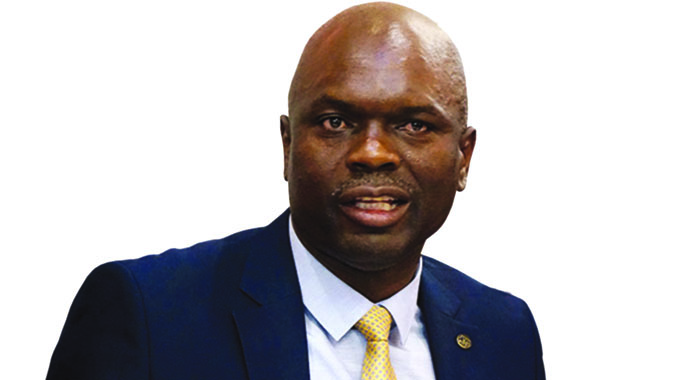EDITORIAL COMMENT: Batoka a positive addition, but not a total solution

THE continued progress on preparing for the construction of the huge Batoka Dam and the pair of large hydro power stations is continuing, and must continue, for those power stations will be needed by both Zimbabwe and Zambia.
A hydro power station costs a lot in investment, in fact being among the most expensive stations to build for each megawatt generated once you include the dam wall.
But operating costs are low, since the “fuel” is free, in the case of the Zambezi dams largely the rain falling in south-east Angola and north-west Zambia. Even maintenance is lower than a thermal station as water is clean, so wear is a lot less.
So once the dam wall and the initial investment in the power stations is paid off in loans or returns, the cost of the power can be low. There is still maintenance and, in a decades long cycle, even replacement of critical components, but even when these costs are included in the charges, the power is still cheap at this stage.
In addition hydro-power is clean, there are no greenhouse gas emissions. And this is important in the modern age. So long as the environmental impacts have been properly costed, and environmental pluses included, normally in the sort of agriculturally difficult land that comprises much of the future Lake Batoka, the pluses even outnumber the minuses, especially if the plans include the local population, instead of treating them as a nuisance.
So we need Batoka.
But we must not assume it will solve our problems. For a start although the power station will have a pair of 1 200MW power stations, giving a total of 2 400MW, a lot more than the 2 000MW or so that the two Kariba stations can generate when going flat out, that output will not be continuous over a year.
Lake Batoka will be a much smaller lake and Lake Kariba, a shorter and much narrower lake with only a small fraction of the storage. This makes Batoka far more of a run-of-river scheme, that is what flows each day into the top end of the lake will flow out a few days later through the turbines at the power stations.
A little-bit can stored when flows are really good, but not much. That means when the Zambezi is in flood, output will be high, with in anything close to a reasonable year both stations going flat out. But as flows die back so the generation must die back, and at low water we might only be getting say a third of the maximum output.
The Zambezi never runs dry or comes even close. What goes over the Victoria Falls only has to flow 54km before it goes out through a turbine, but as we all know the flow over the Falls is very variable and so the output through the turbines will be very variable.
However, this problem can be ameliorated to a great extent because Lake Kariba is the largest storage dam in the world, and with both dams having oversized power stations the two sets of power stations on each lake can operate as a system.
During high water Batoka will go flat out while the Kariba stations cut back and the bigger lake fills quite fast. As the flows die down, the Kariba stations can take up the slack.
Although both Zambia and Zimbabwe have extended their Kariba stations, they have not extended their energy output. For many years all the water coming down the Zambezi has gone through the power stations, and nothing through the flood gates.
The two stations average even in a moderately good year only about two thirds of their maximum output. The reasons both stations were expanded was to give major flexibility to both countries.
At peak demand a Kariba station goes flat out for a couple of hours, chewing up its water ration at almost twice the permitted rate.
Then as demand falls so units are turned off until by midnight not much is running at all, and the daily average flow through the station is met. With Batoka this will be extended over more than a 24 hours cycle to an annual cycle, with Batoka even taking some of the peak power strain using its limited storage.
The upshot is that Zimbabwe and Zambia will average around half, perhaps a bit better in a good year, of the maximum output, but can cope with the high-flow and low flow annual cycle thanks to having oversized stations on both lakes.
This is still very useful, very much needed and worth building Batoka to get. But it still means we have to continue developing our thermal stations, but hopefully using natural gas from Muzarabani with half the carbon footprint and far quicker start-up and shut-down times.
This in any case makes sound sense when you consider that the Zambezi catchment has droughts some years. Putting too many of our energy eggs by the river is high risk when we have a drought, so we need the regular output from other sources.
It is likely that the Zambezi River Authority has already worked out the details of how the flows will be managed. It is now involved in that necessary work of making sure a proper environmental impact assessment has been done and has forwarded this to the responsible authority in each country, and is now finalising the tender requirements for the initial access roads.
The impact assessment has gone beyond the environment and is also looking at the communities around the dam site, in the area that will be flooded, and in the area that will become lakeshore property.
For Kariba this was done badly, just move and dump the people, and it has taken some time at least in Zimbabwe, in fact up to the Second Republic, to work out how those communities can use the lake that covers their grandparents’ old homes and get the pluses, instead of just living with the minuses.
We assume a great deal more thought has gone in at the initial stages over how the Batoka impact will be managed a lot better.
This is how all development needs to be planned, looking at all the impacts, both good and bad, and making sure everyone gets part of the good and no one, especially those who live in the vicinity, get any of the bad.










Comments